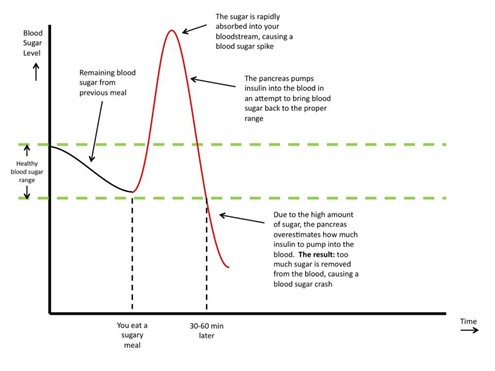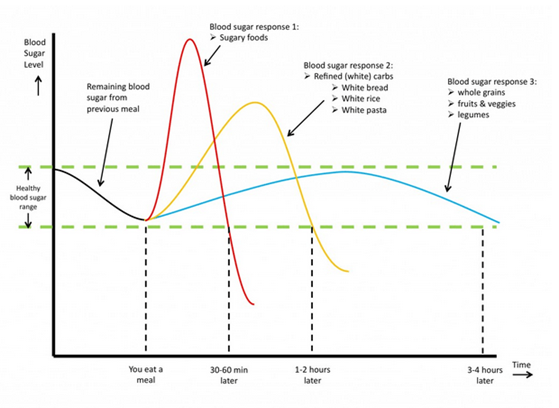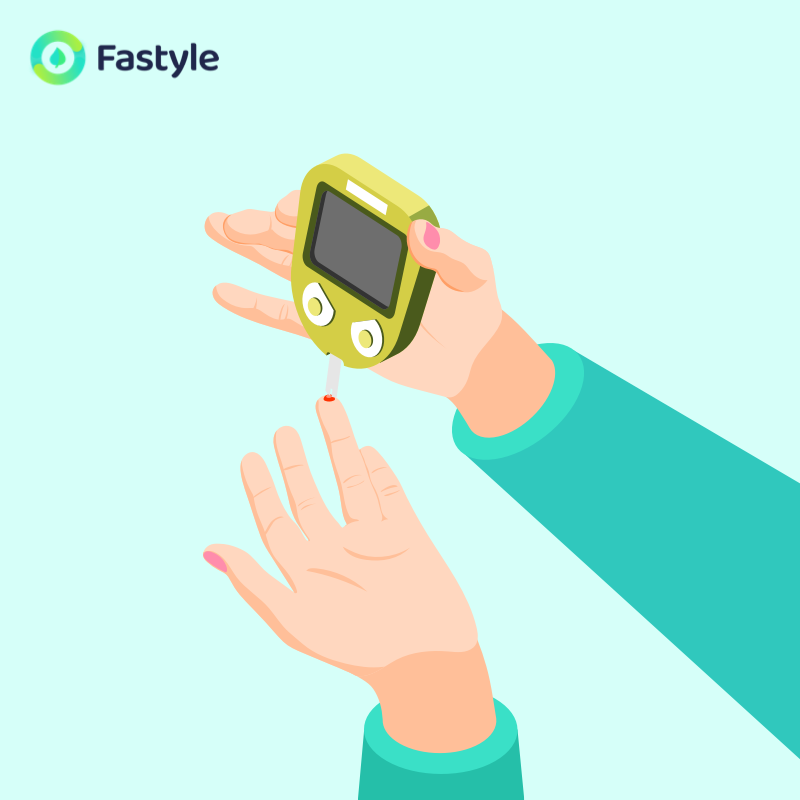Do you feel tired after eating a carb-loaded meal? Or do you have constant cravings for carbs like cakes or bagels? This is possibly caused by the change in your blood sugar level after eating foods rich in carbohydrates.
What is “Sugar Crash”?
Sugar crash refers to the sudden drop in energy level after having a large number of carbohydrate foods, especially refined carbohydrates or sugar. It is also commonly known as reactive hypoglycemia, as a result of postprandial (after meal) low blood sugar levels.
The physiological cause of sugar crashes lies in quick spikes and drop in blood glucose levels (BGL). When a large number of carbohydrate foods, especially refined carbohydrates, are eaten, they are digested and remain in your bloodstream as glucose for the body to use as fuel.
As your BGL spikes higher than normal level than it’s used to or should normally be, in a natural response your pancreases will rapidly produce more insulin to help remove the excess glucose from the bloodstream to keep the level consistent.
The sudden spike and drop in BGL creates a roller coaster effect and will result in a BGL crash or even hypoglycemia (low blood sugar) when too much glucose is removed from the blood by the overproduced insulin.

Image source: https://www.gestationaldiabetes.co.uk/spike/
How does “Sugar Crash” Affect You
Sugar crashes may affect people differently depending on age, health status, and activity level.
For normal healthy individuals, sugar crash makes them crave carbohydrates. This will slowly result in strong dependence on carbs most likely refined carbs such as sugar and white grains to satisfy the craving caused by the “sugar crash”.
In short term, calories intake will be increased so that body will suffer from more workload to produce enough insulin to remove glucose out of the bloodstream to maintain a normal BGL.
A constant craving and intake of carbohydrates result in a higher demand for insulin which also stresses the “producing factory”, that is, the pancreas. This increases the risk of insulin resistance and poor insulin sensitivity. When the pancreas cannot produce the insulin to be needed, it will also increase the risk of type 2 diabetes.
For people with diabetes, constant sugar craving could be a sign of poor BGL control with large and frequent consumption of refined carbs causing a “sugar crash”. The more frequent this happens, the higher the risks of having a hypoglycemic episode (low blood sugar).
If you are prediabetic, have PCOS or diabetes and experience sugar crashes or low blood glucose often, it is worth getting your levels checked and talking to your doctor for adjustments with your medication and management plan.
How to Stop “Sugar Cravings”
For healthy individuals who have normal pancreas function and blood glucose control, sugar craving is more likely the result of behaviors and reward feelings, and sometimes physiologically due to stress, sleep deprivation, or hormone change.
It is possible to change your sugar craving by engaging in healthy and mindful eating, reducing the calories intake, and avoiding excessive restrictions. Building a regular and healthy routine can also help you reduce stress and get sufficient rest to avoid triggering cravings. It’s not easy to say goodbye to sugar cravings and it’s necessary to learn about some simple tips to stop sugar cravings efficiently and quickly.
What Causes Sugar Cravings?
| Skipping meals | Stress | Craving refined carbs? (sugar) | Feeling tired? | Artificial sweetener addict? | Habit? Simply bored? | Dehydrated? |
| ↓ | ↓ | ↓ | ↓ | ↓ | ↓ | ↓ |
| Build a regular routine for meals and snacks | Do a quick workout, exercise can reduce stress | Eat balanced meals and snacks with variety in choices. | Try and stick to a regular sleeping schedule. Getting bed, the same time every day | Reduce your intake, swap your Diet drinks to infused ice-tea, plain or sparkling water | Replace with healthier snacks or healthy habits such as exercise, walk and other recreational activities. | Drink plenty of water. |
Foods to Helping Prevent “Sugar Crash”
Food, especially carbohydrate foods play a significant role in managing and preventing sugar crash.
Glycemic index (GI) refers to the effect of food on BGL; higher GI has a greater and rapid effect on BGL with quick spikes and drops causing sugar crashes. Carbohydrate foods can be divided into three types based on their GI:
- High GI food: sugar, sugar sweeten beverages, sugar desserts, refined (white carbs)
- Medium GI food: Refined (white carbs), whole meal grains, some whole grains and starchy vegetables
- Low GI food: most fruits and vegetables, legumes, whole grains, dairy
Protein food and fat have zero carbohydrates with a small effect on BGL. Choosing foods that are lower in GI has a slower effect on BGL, preventing the quick spike and crash, “roller-coaster effect”.

Image source: https://www.gestationaldiabetes.co.uk/spike/
Summary
- Sugar crash occurs when there is a rapid and drastic change in blood glucose level.
- To better control blood sugar level, it’s suggested to avoid frequent consumption of refined carbohydrates.
- Frequent episodes of “sugar crash” may increase calories intake, sugar cravings, risk of developing metabolic syndrome.
- Learn to stop sugar craving by developing healthy eating habits, choosing healthy foods, managing stress and building regular routine.
